|
Expedition: Fernando de Norona 2019
Last October one more expedition to Fernando de Noronha Archipelago took place by the PELD-ILOC team in order
to continue the annual monitoring of reef biodiversity. Every trip the team is organized to sample fish abundance,
benthic community percent cover and coral colonies monitoring in three different sites. Water temperature in FN
varied from 26 to 28oC yearly, with good visibility in most of the seasons (approx. 20m). As part of the Archipelago is
protected from fishing in the last 30 years the abundance of jacks, snappers, sharks and rays is comparatively
higher than coastal sites. Tourism and fishing outside the park limits have increased last years and monitoring the
effects of such impacts in the park areas is important to understand the protection effectivity. Fernando de Noronha
is an important breeding refuge for marine turtles and sharks, while maintain high abundance of many threatened
species. In addition, FN is an unique site in the Atlantic where a population of Spinner Dolphins inhabit all year long.
Marine tourism generated million of dollars of revenues each year from the archipelago, but new government
directions while encouraging increase visitation, is weakening the protection measures. The results from the long
term monitoring program is thus important to show how indicators of biodiversity is responding to growing
anthropogenic pressures.
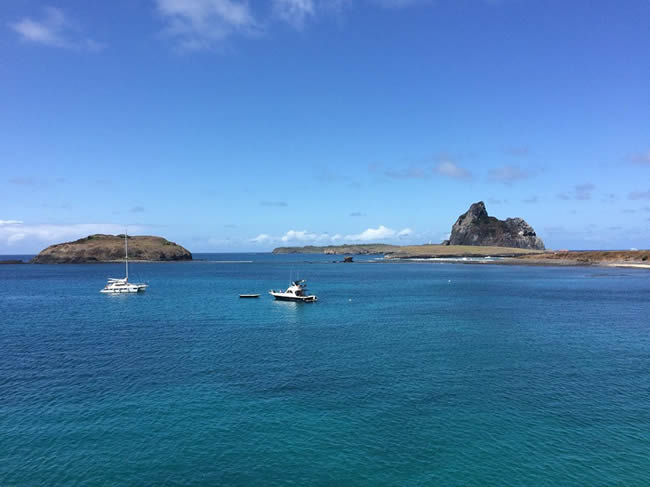
View of Fernando de Noronha landscape.
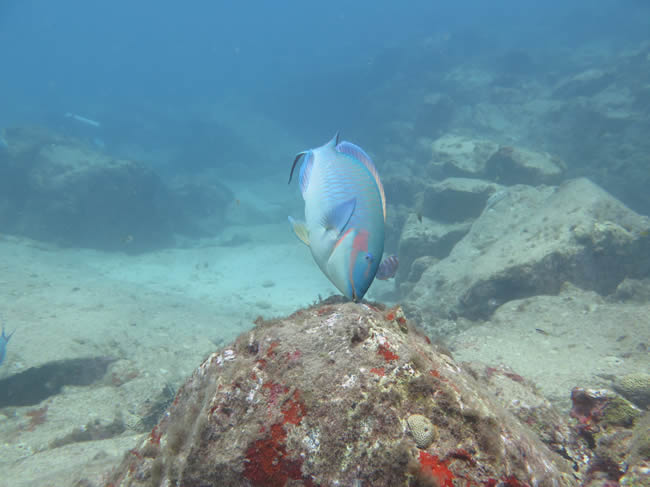
Parrotfishes are protected from fishing inside Marine National Park of Fernando de Noronha.
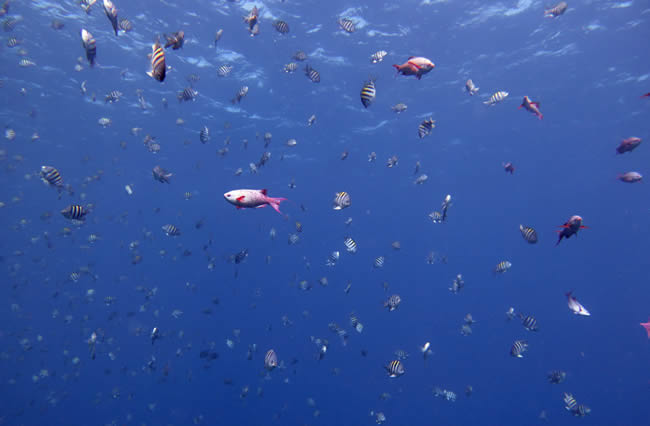
Planktivores are an abundant fish component of Fernando de Noronha rocky reefs.
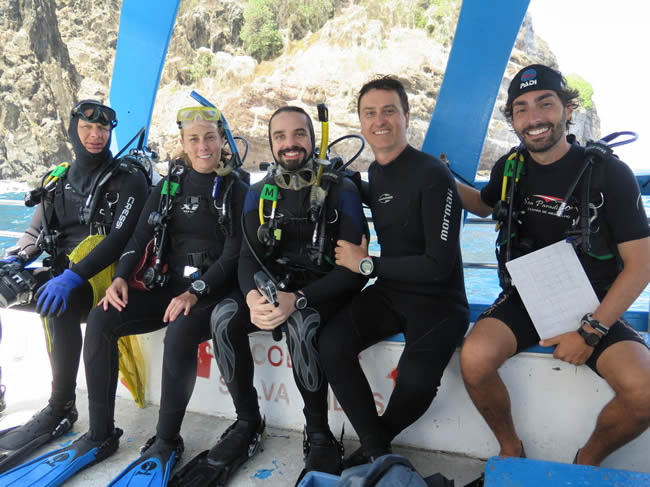
Expedition team preparing to dive at Sapata site.

Turfs sampling with an air-lift for dynamics studies.
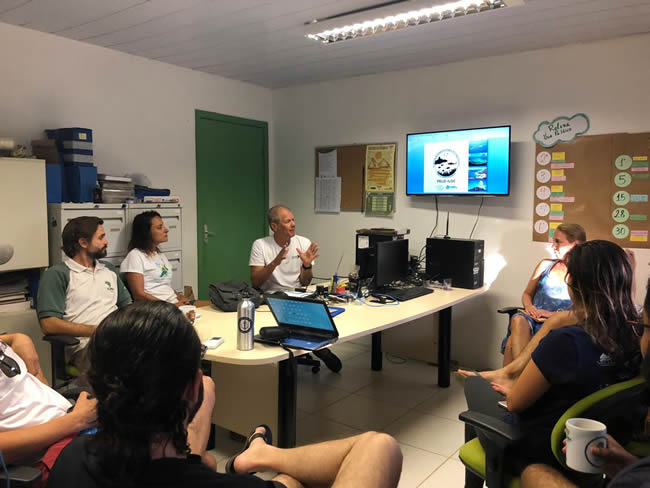
The PELD-ILOC team met the National Park staff in order to discuss recent results. |















